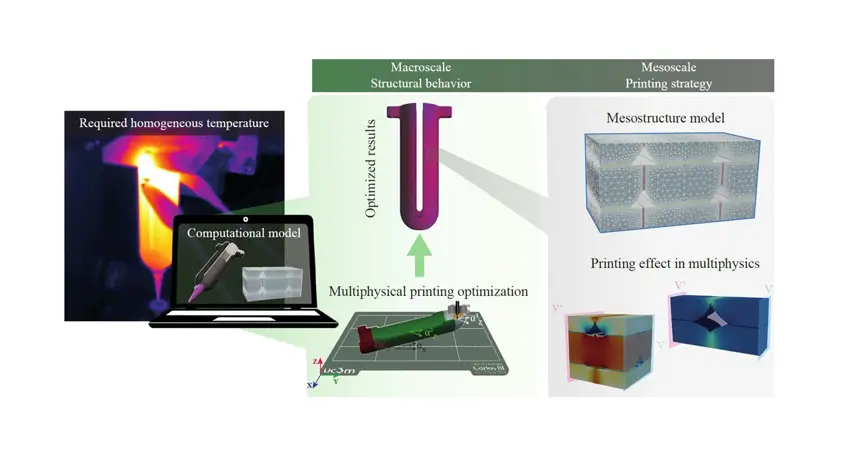10 Feb 2025
New study presents computational framework for optimising the thermo-electro-mechanical behaviour of 3D printed multi-functional materials
Research published in Nature Communications opens a new avenue for future multi-functional design of structural components, with applications spanning electronics, medicine, aviation and civil engineering

The incorporation of multifunctional characteristics in engineered materials is an emerging field, especially within additive manufacturing. Conductive thermoplastics, created through filament extrusion techniques, present great promise due to their ability to transmit electrical signals while also providing structural support. However, the material composition and printing conditions play a critical role in shaping the component's mesostructure (such as filament bonding and void distribution), which directly affects both its electrical resistivity and mechanical properties.
A joint research effort from the Universidad Carlos III de Madrid (Spain) and the University of Oxford has led to the development of a multi-scale computational framework to predict and optimize the thermo-electro-mechanical behaviour of 3D-printed conductive polymers. This work, supported by original and extensive experimental validation, offers a reliable methodology for bridging the gap between mesoscopic and macroscopic multifunctional behaviours in conductive components. The paper was published in Nature Communications earlier this month.
Professor Emilio Martínez-Pañeda, lead investigator of the project within the Oxford team, says, “The ability to link the desired electro-thermo-mechanical material response with 3D printing process parameters is very exciting, as it allows us to quickly and efficiently develop a new generation of multi-functional components that can be a game changer in many areas, from medical devices to novel structural health monitoring techniques.”
Professor Daniel Garcia Gonzalez (Carlos III University), corresponding author of the paper and Oxford alumni, adds, “For years, porosities and inter-filament bonding were seen as printing-induced limitations that hindered the optimal design of these structures. Now, by integrating advanced computational and experimental tools, we have found a way to spatially control these mesostructural features, enabling the programmable design of customized multifunctional responses in smart structures.”




